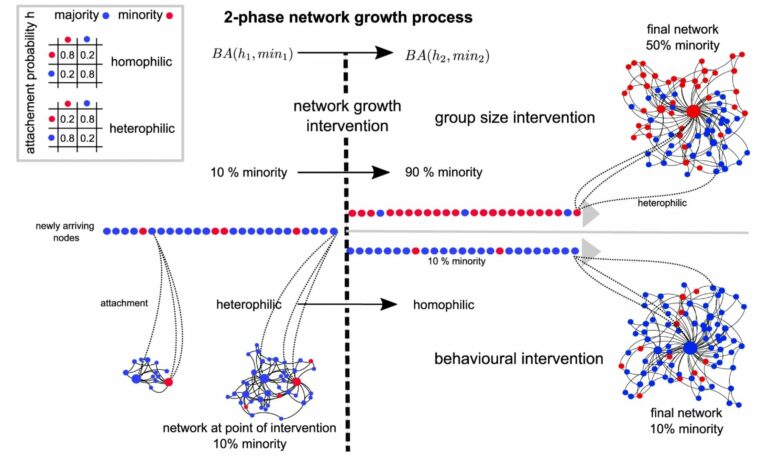What is the impact of affirmative actions, such as quota systems, on minorities’ representation in top ranks of the academic and corporate worlds? Scientists used mathematical models for the first time to quantify how successful quota systems can be for improving women’s visibility in science.
Their findings were published in the latest edition of the journal Communications Physics.
“The main question we wanted to answer was: the number of women has increased in academia and in the corporate sector over the past 100 years, but why do they not reach the top positions in their network?” points out Fariba Karimi, a scientist at the Complexity Science Hub and co-author of the paper.
According to the study, quotas alone are not sufficient to make minorities more visible in a network. “In essence, the results show that having even extreme quotas does not necessarily ensure that minorities will be represented in top ranks of the network as we would expect from their size,” says Karimi.
“In contrast, a very moderate quota would be extremely useful when it is combined with an inclusive environment in which people, especially those in high power positions, are open to bringing minorities into their personal networks,” adds Karimi. “By doing so, they are basically helping minorities grow their social capital through those connections.”
Hypothetical scenarios
In the study, the researchers created a network growth model to analyze how successful interventions can be for improving minorities’ visibility in social networks. Two kinds of interventions were tested: group size interventions, such as quotas; and behavioral interventions, such as changing the way groups interact.
“We ran this two hypothetical scenarios, sometimes isolated, sometimes combined, as we wanted to evaluate which combination of interventions would be more effective in pushing minorities to the top of the ranking,” explains Karimi.
The model took into account two key social processes. First, the formation of structural inequalities that emerge within social networks due to certain preexisting societal biases, such as in-group favoritism or homophily—the notion that humans tend to preferentially interact and connect with individuals who are like them in some way. Second, the impact of different interventions on changing those initial structural inequalities.
The results show, for instance, that even a very strong group size intervention—to have a 90 percent quota—will not improve minorities’ representation in the top ranks to a level proportional to their total size if the initial configuration is strongly homophilic. As a result of historical and cumulative structural inequality, minorities are locked in their initial network position.
Multidimensional
“The study shows that the discussion [of improving minorities’ visibility] should not be one-dimensional”, highlights Leonie Neuhäuser, from RWTH Aachen University and co-author of the study.
From a network perspective, increasing the size of a group does not necessarily increase the visibility of minorities, according to Leonie Neuhäuser, from RWTH Aachen University and co-author of the study. “Obviously, this is a necessary step, but we should also consider the social network structure and behavioral aspects when designing interventions.”
The results indicate some behavioral interventions that may affect minority representation in top ranks. A minority group could benefit from increasing networking if they are large enough to gain a cumulative advantage in a growing social network. Alternatively, if quotas are not large enough, the majority group should be encouraged to mix with the minority group, since the latter will not gain visibility without connecting to the former.
Hard to change
Despite the difficulty of changing behavior, Karimi emphasizes that increasing diversity depends on it. Leaders and top-level professionals can be educated about this issue and be inclusive when bringing people with diverse backgrounds into important positions on social networks, according to Karimi.
“We also need some regulation,” adds Karimi. “As humans, we have a tendency to prefer interacting with people who are similar to ourselves, since it is less cognitively demanding—the homophily principle. Evolutionarily speaking, we are rewired to avoid interacting with outgroup members and that is why incentivizing and educating people about the benefits of diversity can help overcome those barriers.”
“Due to the external regulations, after a certain number of minority people are incorporated into the system, things begin to change. Having more people of diverse backgrounds around us reduces our fear of strangeness. As a result, behavior would follow.”
More information:
Leonie Neuhäuser et al, Improving the visibility of minorities through network growth interventions, Communications Physics (2023). DOI: 10.1038/s42005-023-01218-9
Provided by
Complexity Science Hub Vienna
Citation:
Quotas alone will not solve the problem of underrepresentation of minorities in modern workforce, finds modeling study (2023, May 25)



